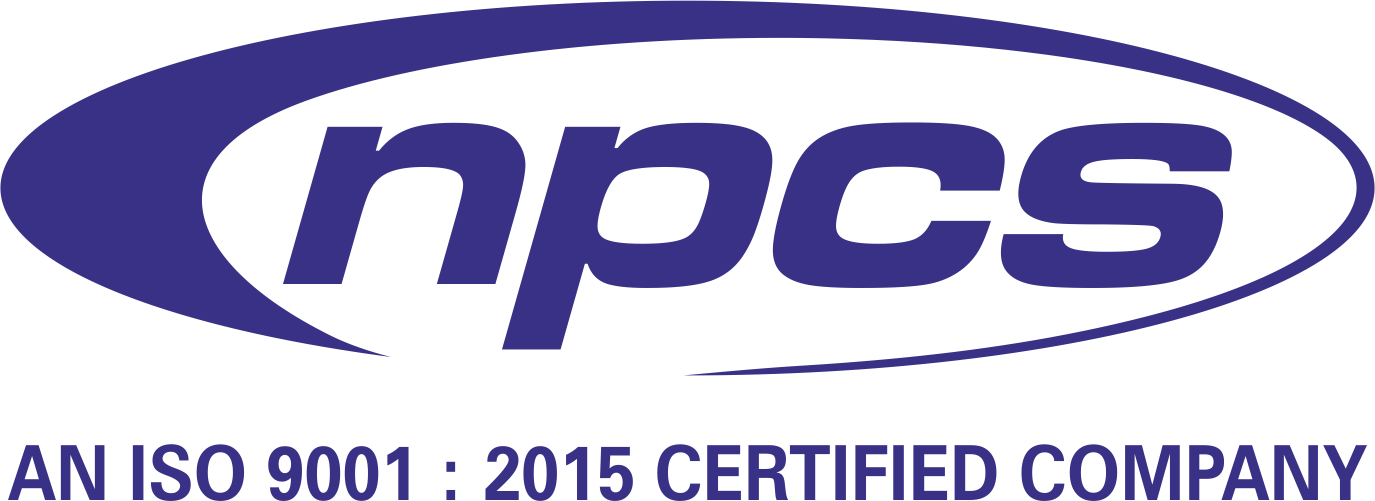L-Lysine Hydrochloride Production, an important amino acid that secures numerous biochemical features and protein synthesis in the body. Although It is also naturally occurring in food items, but rising demand for it such as drugs and pet feed etc. Corn is the best and sustainable way to produce this high demand of L-Lysine Hydrochloride, economically.
Feasibility and Techno-Economic Viability Study
As a result of Glucose, Lysine (fermentation) is generated from Corn that makes it an outstanding raw material for the fermenting process of food supplementation. Recent developments in microbial fermentation strategies using certain pressures of germs have made it possible for efficient conversion of corn’s glucose to L-Lysine Hydrochloride. In regards to costs, corn-based manufacturing commonly becomes cheaper contrasted to synthetic techniques or extraction from other sources.
Why Invest in this Manufacturing Industry?
- Market Dimension and Share: Worldwide, the L-Lysine Hydrochloride Production market has seen a solid growth as it is now being extensively made use of in foods & feed sectors. Also, the growth in international meat consumption is additionally producing a better demand for pet feed increased with L-Lysine Hydrochloride Production.
- Patterns: The expanding health-consciousness and raised concentrate on protein-rich diets are promoting supplements and foods strengthened with amino acids, including L-Lysine.
SWOT Analysis
Strengths
Sustainable production making use of corn. Established demand in different sectors. Technical innovations helping with economical manufacturing.
Weaknesses
Reliance on corn costs. Technical obstacles in particular areas. Manufacturing can be affected by seasonal variability of corn crops.
Opportunities
Climbing demand in arising markets. Prospective for expanding right into high-value pharmaceutical segments. Technology in fermentation strategies.
Threats
Competitors from synthetic L-Lysine Hydrochloride Production makers. Fluctuations in global corn production. Strict policies and conformity standards in particular markets.
Profitability Analysis
Production of L-Lysine Hydrochloride Production from corn has actually experienced better earnings margins as a result of technological innovations and scaled production. The persisting need from established fields guarantees a stable revenue stream.
Global Expansion and Localization
Although North America and Europe are the primary producers there is significant scope in corn-growing Asian markets as well for consumption with a growing livestock sector. Nevertheless, companies must individualize operations based on regulatory standards and regional corn production cycles.
Supply Chain
This way, all year long nothing is lacking in corn. Local partnership with farmers, embracing sustainable farming practices and spending for storage infrastructure are important.
Branding and Marketing
This eco-conscious portion is catching for Marketing L-Lysine Hydrochloride Production fabricated from corn as feasible and natural product. Marketing strategies: Uses And advantages in Animal Feed / Health Supplements & Pharmaceuticals.
Regulatory Changes and Industry Compliance
In this case, production will be mostly safe, though it is dependent on local laws. While these steps may aid in maintaining compliance and increasing export activity, it is important to stay well informed about current international business laws especially if expanding your reach into new markets.
Technological Innovation
The investment in R&D is constant and, over time, the fermentation process can become more efficient meaning that yield will increase whilst this production cost decreases.
Competitor Analysis
The fact that L-Lysine Hydrochloride Production is produced through corn-based solutions plays to the strengths of some manufacturers, but synthetic methodologies and other sources remain competition. Turning more is about hyper-innovation, cost optimization and reaching the market.
Visit this Page for More Information: Start a Business in Chemical Industry Projects
Future Opportunities
The developing health and wellness industry creates many opportunities for the growth of L-Lysine Hydrochloride Production products, from nutraceuticals to more niche pharmaceutical applications.
Raw Material Sourcing and Sustainability
A more common plant would be corn, which thrives on vast climate ranges and can exist in a number of zones found throughout the North America or Africa. It’s a profusion of the richest L-Lysine raw material almost inexhaustible. Ensuring the sustainably sourced L-Lysine is a key factor in determining profitability and longevity of production. Collaborating with local farmers, incentivizing no-pesticide farming methods and getting into long-term contracts means a steady stream of quality corn.
Manufacturing Process Overview
Corn is converted into L-Lysine Hydrochloride via several processes:
- Corn Milling: First, the corn kernels are milled and starch with high in glucose is separated from it.
- Liquefaction: the starch is still in there; it has been broken down by enzymes to some extent into sugars.
- Fermentation: The bacteria strain typically Corynebacterium or Brevibacterium is fed and they produce L-Lysine Hydrochloride Production.
- Refinement: The fermentation broth is purified in multiple steps to obtain high purity L-Lysine further hydrochloride salt formation enhances its stability and easy handling.
Related Business Plans: Chemicals (Organic, Inorganic, Industrial)
Cost Structure and Financial Implications
This is crucial for any capitalist or stakeholder to identify the price framework. Major costs are comprised of raw materials which is essentially corn, fermentation infrastructure, labor, utilities, governing compliance and logistics. Economies of range play an essential function: as production scales up, the per-unit price of L-Lysine production goes down dramatically.
Technological Developments
Biotechnological advancements are forming the L-Lysine market. Genetic modifications of microbial pressures to boost their efficiency, computer-controlled fermentation processes, and advanced filtration techniques are several of the developments. Embracing these modern technologies can supply companies an one-upmanship on the market.
Human Resources and Skill Development
A competent labor force is the backbone of L-Lysine manufacturing. Basic training in microbial fermentation, QA and machine operations. A purchasing organization must invest in ongoing coaching and training to maintain the site quality and efficiency.
Consumer Perspective and Branding Insights
The shift of consumer sentiment natural products and materials is undeniable. If L-Lysine Hydrochloride Production is from corn, using the only green and natural could be accepted by brand demand policy, Labels explaining the source and manufacturing methods can make customer rely on.
Global Markets and Localization Strategy
There are indeed different national requirements as well as some variations of compliance standards. For example, organic products could have highest importance in Europe while Eastern markets would be more interested about prices. Adaptation of the item to local tastes, and also compliance with regional guidelines is crucial for globalization.
Risk Management
Just like in any industry, the L-Lysine sector has its share of risks from volatile corn prices to sudden regulatory changes. Strong risk management practices with diversification of corn supplies and monitoring regulatory changes are potential solutions to these difficulties.
Feedback and Continuous Improvement
By including feedback from multiple constituencies whether it be consumers, distributors or even employees; each perspective can provide a unique approach. Revising and improving production processes, marketing tactics, and growth plans accordingly would mean that the company remains agile through constant feedback.
Application and Research Insights
In addition to its known uses in animal feed and nutraceuticals, L-Lysine Hydrochloride Production may have applications beyond the familiar. Early research suggests that it may be useful for increasing calcium absorption, thereby assisting in osteoporosis prevention. Exploring those niche sectors can open pathways to new revenue.
Navigating Competition
Cost-efficiency is one, as are the quality of products themselves and sustainability/ethical practices. You can use regular SWOT (Strengths, Weaknesses, Opportunities, Threats) analyses to quickly see which areas you need work on and the potential threats your competitors present.
Collaborations and Partnerships
Innovation fostered at Universities, research centers and linkages established with other stakeholders through strategic alliances. These partnerships yield new businesses and research, allowing for the development of novel applications or improvements to their production method.
Regulatory Adherence and Ethical Considerations
In production, ethical inclusions go further than compliance it breeds brand reputation. This way, this company can be considered responsible and ethical as it guarantees equitable wages for workers, safe conditions in which to work and a healthy supply chain.
Read our Book Here: The Complete Technology Book on Chemical Industries
Environmental Considerations
It is important to consider the environmental footprint of production (from water usage in corn farming; through emissions from manufacturing, etc.) This footprint can substantially be reduced by eco-friendly sustainable practices like rainwater harvesting, waste recycling and green energy consumption.
Delving into the Corn Belt
- Understanding Corn Farming: Before you can dive into L-Lysine Hydrochloride Production it is critical to have an understanding of corn farming. The Corn Belt, mostly in the American Midwest is vital to ensure a continuous flow for various sectors including L-Lysine manufacturing.
- Ranges of Corn: Not all corn is produced equal. The damage corn, defined by its indented bits, is the main kind utilized for commercial objectives, including L-Lysine manufacturing.
- Agricultural Practices: Plant turning, sustainable bug control, and natural farming play critical roles in maintaining soil fertility and making certain regular yields.
- The Corn Lifecycle: With seeding-to-maturing totally, getting step rigidity to the plant will help harmonize corn supply chain with L-Lysine making requirements.
The Economic Impact of Corn Farming
The corn plant is the tip of iceberg when it comes to maize farming. This is an economic column that supports thousands of resources. For the L-Lysine market, promoting strong partnerships with these farming neighborhoods is critical.
- Supporting Regional Economic Situations: By sourcing in your area, companies can inject resources into these communities, leading to shared growth.
- Obstacles in Corn Farming: Climate modification, bug invasions, and changing market prices posture significant obstacles. L-Lysine manufacturers can companion with farmers, giving them with resilient plant ranges or financial support during lean times.
Industrial Transformation Corn to L-Lysine
Microbial Fermentation – The Heart of the Refine
It’s fascinating exactly how a complicated particle like L-Lysine Hydrochloride Production is synthesized from simple corn sugars making use of tiny germs.
- Picking the Right Germs: The efficiency of Corynebacterium as well as the Breve stress can differ. Ongoing research in finding the top stress or genetic editing a strong each strain can completely transform yields.
- Maximizing Conditions: Factors such as pH, temperature and nutrient availability can have a significant impact on fermentation efficiency. Consistency in upholding these standards ensures an uninterrupted supply of L-Lysine.
Downstream Processing Purification and Beyond
- Filtration and Centrifugation: These initial steps are designed to separate cells and other material larger than the L-Lysine-containing liquid.
- Chromatography: Chromatography is the state-of-the-art process that makes it possible to produce highly pure L-Lysine, needed for high quality standards.
Quality Control Ensuring the Best for the Market
Impurities in L-Lysine cannot be tolerated at all, small amounts can also make a batch of L-Lysine unusable for certain applications and particularly when it comes to pharmaceuticals. Hence quality control is an issue that cannot be taken lightly.
- Advanced Analytical Techniques: The use of High-Performance Liquid Chromatography (HPLC) ensures purity standard.
- Batch Consistency: Batch consistency e.g. making sure every batch that comes out in the market maintains the quality levels a brand has promised to its customers.
The Market Dynamics
- Understanding Demand and Supply Curves: As a commodity, L-lysine determines its own market through the fundamental interaction of demand and supply.
- Evolving Demands: New market needs such as animal feed continue to dominate while further applications of L-Lysine are brought forward resulting in a shift in demand.
- Supply Challenges: As reflected in the chart above, numerous factors can interfere with L-Lysine supply, from corn crop failures to fermentation drought. Buffering against such disruptions requires strategic stockpiling and diversifying supply chains.
Emerging Markets The New Frontiers
Southeast Asia with its livestock industry on the rise and where there is a health conscious middle-class growing, enough to be of interest in L-Lysine Hydrochloride Production.
- Tailoring to Local Needs: The primary product remains the same so scalability is not a problem, but secondary factors such as packaging and even form (powder v liquid) may need variations based on local needs.
- Cultural Sensitivities: That you need to have an understanding of and respect local cultures and values if you wanted to enter a new market can make or break your business.
Looking Ahead The Future of L-Lysine from Corn
Sustainability The New Mantra
The world is moving towards more sustainable practices at a rapid pace and the L-Lysine industry has to change as well.
- Green Production: This category deals with the use of renewable energy resources, waste minimization and optimal water utilization.
- Sustainable Farming: Working with farmers implement sustainable and organic farming methods makes sense for a green product.
Innovation The Road to Evolution
A closed mind leads to regression. Constant advancement, be it in production approaches, microbial stress, or new applications, is crucial.
- Genetic Modification: Changing microbial stress to improve their L-Lysine production effectiveness or resistance versus contaminants can dramatically boost yields.
- Unique Applications: Research study is hinting at L-Lysine’s function in locations like neurology, specifically in problems like anxiousness and anxiety. Exploring those niche markets can lead to a completely new direction, you never know.
Grasping the Business Model
- Capital Expense & Infrastructure: What this means is, if you are stepping into the L-Lysine sector for the first time or wanting any form of expansion; awareness about capital investment and its complexity can help.
- Establishing Plants: The initial set-up cost of an L-Lysine Hydrochloride Productionn plant can be huge. This includes everything from acquiring land to developing infrastructure and buying the equipment.
- Roi (ROI): Although the first setup expense is high, the ROI can be durable. A streamlined manufacturing process, buoyed by a climbing demand for L-Lysine, guarantees that financiers can expect considerable returns.
Supply Chain Complexities
A well-functioning supply chain, from farm to fork or (desks and factories for industrial crops), assures regular production of the markets.
- Farm Linkages: By building direct partnerships with individual corn farmers or cooperatives, it can guarantee a steady supply of raw materials and even have an impact on the quality of the corn being supplied.
- Distribution Networks: Geographical Robust distribution network that delivers L-Lysine to its various markets animal feed producers, pharmaceutical companies.
Human Resource The Core of Production
Machinery and microbes are the instruments of material creation here, but it is the human minds and hands behind them that orchestrate this symphony.
- Skilled Labor: microbiologist, machine operators Skilled Labor.
- Employee Well-being: A safe working environment, competitive compensation and opportunities for growth can keep attrition levels in check while increasing productivity.
Strategic Marketing & Brand Building
Identifying Target Audiences: This section provides a detailed analysis of target different audiences for each application segment based on consumption and considers the number of Target Audiences them. It is the first step to market anything when you can identify and understand this.
- Livestock Farmers & Feed Producers: The core consumers of L-Lysine Marketing campaigns to this demographic around growth benefits and health-related gains, can spark interest.
- Health-conscious Consumers: Potentially associate L-Lysine Hydrochloride Production with health supplement signaling a natural corn origin in campaigns aimed at this audience.
Branding More than Just a Name
Naming a brand is more than just branding in any market nowadays. It embodies the values, promises and purpose of a company.
- Eco-friendly Branding: L-Lysine can be branded as a key ingredient from sustainable farming, appealing to this optimistic demographic of consumers.
- Transparency: Transparency If consumers can be transparently connected to where or how their purchased items are made; if the process that went into acquiring this garment is known, in turn they trust.
Digital Outreach Tapping the Connected World
It is not only the way of life in this digital age, but also it cannot be that repudiated.
- Informative Websites: Dedicated websites tailored to L-Lysine, including its manufacture and advantages.
- Social Media Engagement: Consistent tweeting, great content sharing and immediate customer interaction across Twitter, Facebook or Instagram can increase the brands visibility & reputation.
Anticipating Challenges & Solutions
The regulatory landscape actually is different in various countries, especially with stem cells and food additives.
- Staying Upgraded: Â One of the most important aspects is staying in touch with new regulations imposed around many different parts of various countries that might hinder your access to smooth markets and simple supply.
- Collaborative Method: Working together with the regulators to understand what issues them and complying as per their request can make things easier on business.
- Outside Hazards – Natural & Economic: all-natural and economic: exterior hazards abound, from dry spells that strike corn return to financial downturns that lower need.
- Diversified Sourcing: Relying on a single region for corn can be dangerous and hence, it is necessary that Canadian Corn Starch depends upon diversified sourcing. Widening the sourcing horizons, even to include global markets is a protective measure.
- Market Evaluation: Basic market analysis might give early cautions concerning potential downturn bringing possibilities for companies to adjust their strategies.
Consumer Trends The Ever-changing Game
- The Ever-changing Game: What is today top-seller may not be worth anything tomorrow. As always, staying ahead of the curve in consumer trends is key.
- Responses Devices: Asking for input from customers and truly adding favorable grievances could help keep the item intact.
- Study & Growth: Common analysis in R&D ensures product grows as per buyer desires and adjustments in science.
NPCS (Niir Project Consultancy Services) report
Purchasing a detailed NPCS (Niir Project Consultancy Services) report can provide several benefits, particularly for businesses and individuals looking to invest in new ventures or understand industry trends. Reasons for Buying an NPCS Report:
Detailed Market Analysis
NPCS reports are not general market surveys, but in-depth studies of the industry with data powerfully supported by statistics from well researched databases to deal with more confound situations.
Feasibility Studies
Know these reports include feasibility studies as well for a relatively easier understanding by the possible investor about the possibility of getting good cleaner returns while ensuring that it carries its own amount of risk.
Industry Trends and Forecasts
It helps the investor with ongoing market trends in an industry, future forecast for policy-making.
Technological Insights
Reports reveal the current updates in technology trends and their impact on various sectors.
Regulatory Framework
Knowing what cited and legal background in your industry or market is beneficial for business planning. The NPCS reports detail the regulatory scenario so that clients may be informed and prepared for any changes in the future.
Competitive Landscape
The reports provide SCP analysis on key players in the market (trends, growth strategies, and SWOT analysis of the leading competitors)
SWOT Analysis
Along with industry snapshots, the reports also carry SWOT (Strengths, Weaknesses, Opportunities, Threats) reports based on the respective industries.
Investment Guidance
Our Various reports on new ventures help investors To Get a Comprehensive View Of Particular Industry Which Can Reduce Risk And Can Bring Huge Profits In their Business.
Business Planning
It is a very useful database for business planning like setting up the plant, sizing of plant capacity, productivity improvement and cost reduction processes.
Tailored Information
NPCS reports are customizable to fit individual requirements thus each client gets the desired data (compared to bland box solutions from elsewhere).
In conclusion, an NPCS report can be an invaluable tool in understanding an industry or market, aiding in decision-making, planning, and investment strategies.
Conclusion
The L-Lysine Hydrochloride Production industry-tied back all the way to those endless cornfields and propelled by advanced biotech–is a great example of how natural and modern technology can combine in graceful synergy. Looking forward, the potential size and scale of this market appear to be massive; however, its future course will likely hang on tactical decisions made with flexibility that keeps quality and sustainability at the forefront. For those willing to jump the hurdles, though (not just financial but also influence in international bodies), it affords awesome benefits.
Visit the page Select and Choose the Right Business Startup for You for sorting out the questions arising in your mind before starting any business and know which startups you can plan.
We, at NPCS, endeavor to make business selection a simple and convenient step for any entrepreneur/startup. Our expert team, by capitalizing on its dexterity and decade’s long experience in the field, has created a list of profitable ventures for entrepreneurs who wish to diversify or venture.
Frequently Asked Questions
Is L-Lysine from Corn as Effective as From Other Sources?
Yes, the efficacy remains the same irrespective of the source.
What’s the Environmental Impact of Corn-Based Production?
The authors say that creating the dye from corn is more sustainable than synthetic methods. But the environmental damage will be determined by land management practices.
Are there GMO Concerns with Corn Used in Production?
Application of GMO Corn differs according to legality as well. Details on the use of GMOs are frequently provided by companies.






